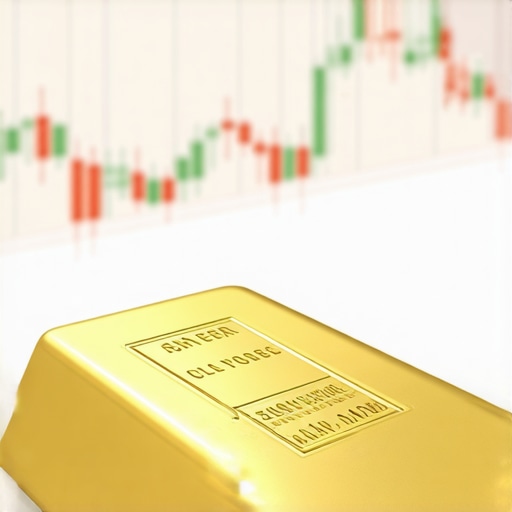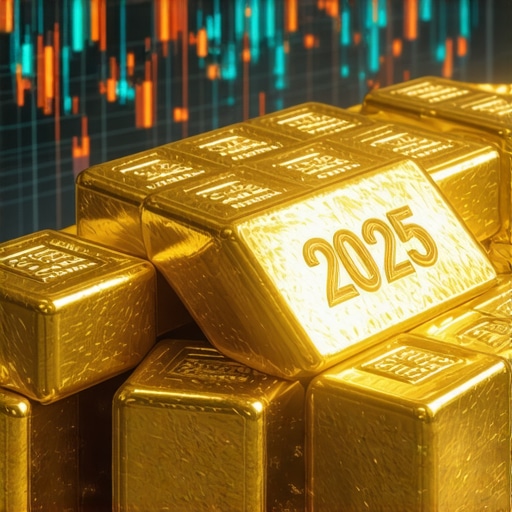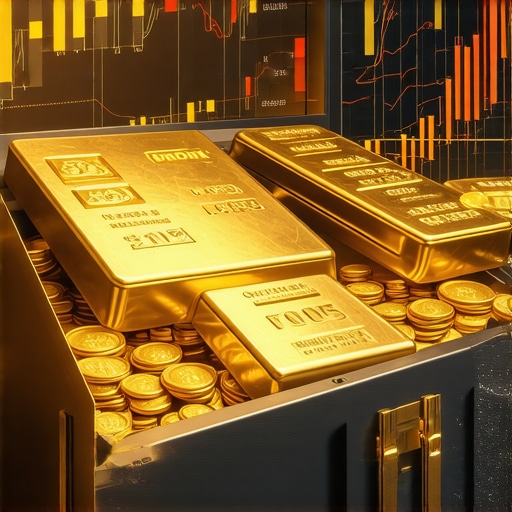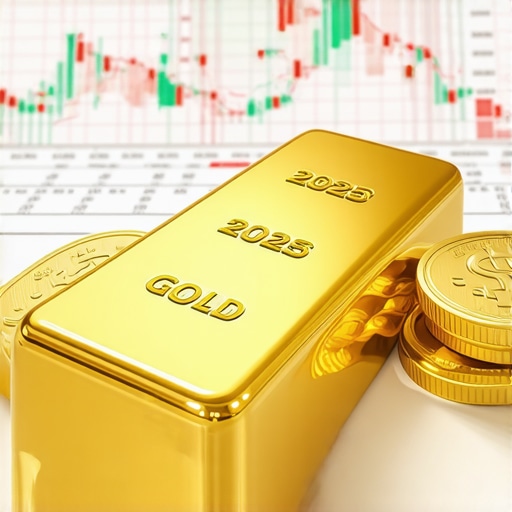Strategic Significance of Gold Coins & Bars in Wealth Preservation for 2025
As global economic uncertainties persist, the role of physical gold investments—particularly coins and bars—becomes increasingly vital for savvy investors aiming to safeguard their wealth. Analyzing the evolving market dynamics and geopolitical factors reveals that selecting the right gold assets in 2025 requires a nuanced understanding of the supply-demand mechanics and macroeconomic indicators.
Unveiling the Most Valuable Gold Coins & Bars for 2025
Among the myriad options, certain gold coins and bars stand out due to their liquidity, purity, and historical significance. For instance, sovereign-minted coins like the American Gold Eagle and the Canadian Gold Maple Leaf offer exceptional purity and recognition, making them ideal for wealth transfer and estate planning. Conversely, investment-grade gold bars, such as those produced by LBMA-approved refineries, provide cost-effective bulk holdings aligned with institutional strategies.
Advanced Criteria for Selecting Optimal Gold Assets
What Are the Key Factors to Consider When Choosing Gold Coins & Bars for Wealth Preservation?
Expert investors prioritize purity (typically .9999 fine gold), liquidity, and provenance. Additionally, assessing market premiums, storage costs, and the buy-back ease can significantly influence long-term investment outcomes. As highlighted in recent market analyses, integrating gold bars with high liquidity and coins with numismatic value can diversify risk and maximize returns in volatile environments.
Market Drivers and Price Forecasts for 2025
Global economic factors—including inflation rates, central bank policies, and geopolitical tensions—are pivotal in shaping gold prices. According to a comprehensive market forecast analysis, gold is expected to maintain its status as a safe haven, with potential price appreciation driven by inflation hedging and dollar fluctuations.
Expert Strategies for Maximizing Gold Investment Returns in 2025
Incorporating emerging trends such as gold ETFs and futures trading can complement physical holdings. Developing a diversified portfolio that combines physical gold with derivatives and equities—like gold mining stocks—can enhance risk-adjusted returns. For more comprehensive guidance, explore portfolio development strategies.
How Can Investors Navigate Market Volatility While Ensuring Wealth Preservation?
Expert traders leverage technical analysis and market timing to optimize entry and exit points. Utilizing hedging techniques and staying informed on central bank gold purchases can provide additional layers of security and growth potential.
To deepen your understanding of the current gold market and refine your investment approach, consult authoritative sources like the World Gold Council, which provides invaluable data and reports on global gold demand and supply trends.
Interested in expert-level insights? Engage with our community or consult financial advisors specializing in precious metals to tailor strategies that align with your wealth preservation goals in 2025.
Harnessing the Power of Gold Demand Trends to Maximize 2025 Investments
Understanding evolving gold demand patterns is crucial for investors aiming to capitalize on market opportunities in 2025. The jewelry sector remains a significant driver, especially in emerging markets like India and China, where cultural affinity for gold persists. Additionally, industrial applications and technological innovations are subtly influencing supply and demand dynamics, making it vital to stay informed through authoritative sources such as the market analysis reports. By aligning your investment strategy with these demand drivers, you can better anticipate price movements and adjust your holdings accordingly.
What Are the Nuanced Market Drivers That Could Shape Gold Prices in 2025?
Beyond traditional factors like inflation and geopolitical tensions, emerging influences such as digital asset integration and central bank policies are reshaping the gold landscape. Recent research from the gold market analysis highlights how central banks’ strategic gold purchases and sales, especially in Asia and Europe, could create volatility or stability depending on geopolitical developments. Moreover, the global shift towards sustainable mining practices and ethical sourcing is impacting supply chains and premiums, making due diligence essential for discerning investors. As such, understanding these advanced drivers can enable more precise timing and asset selection, from physical coins and bars to ETFs and mining stocks.
Have You Considered How Geopolitical Risks and Macro Trends Intersect to Influence Gold in 2025?
Expert investors recognize that the intersection of geopolitical tensions, economic sanctions, and currency fluctuations creates a complex environment where gold functions as both a hedge and a speculative asset. For instance, escalating conflicts or trade disputes between major economies could accelerate gold demand as a safe haven, while policy shifts—such as interest rate adjustments by the Federal Reserve—may influence gold’s relative attractiveness compared to other assets. Staying abreast of these macro trends through trusted sources like the World Gold Council’s reports can provide a strategic edge. To deepen your knowledge, explore how global economic factors shape gold prices.
Deciphering the Impact of Global Macro Trends on Gold Valuations in 2025
As we venture further into 2025, understanding the intricate web of macroeconomic factors influencing gold prices becomes paramount for seasoned investors. Beyond conventional indicators like inflation and currency strength, emerging variables such as digital asset correlations and central bank reserve policies are reshaping the landscape. For example, recent research from the World Gold Council highlights how shifts in central bank gold reserves, particularly in Asia, can act as catalysts for price volatility or stability. These reserve adjustments often reflect geopolitical trust dynamics and monetary policy shifts, making them crucial for strategic positioning.
Simultaneously, the surge in digital assets, notably cryptocurrencies, exhibits a complex relationship with gold. While initially seen as a rival, many investors now view digital assets as complementary hedges against fiat currency devaluation, indirectly boosting gold demand. Comprehensive analysis from the Stanford Financial Laboratory suggests that these hybrid hedging mechanisms could influence gold’s safe-haven status, especially amid rising macroeconomic tensions.
How Do Geopolitical Tensions and Economic Sanctions Intersect to Influence Gold Demand?
Expert investors recognize that geopolitical tensions—such as trade disputes, regional conflicts, and sanctions—can significantly alter gold’s demand dynamics. When major economies impose sanctions or experience escalations, countries often increase their gold reserves as a strategic buffer, a phenomenon documented extensively by the Sprott Physical Gold Trust. This behavior not only supports gold prices but also introduces volatility, as market participants react to geopolitical news and policy shifts. Moreover, the intersection of these tensions with macroeconomic policies—like interest rate adjustments—creates a multi-layered environment where gold acts as both a hedge and a speculative asset.
For astute investors, staying informed through authoritative sources like the World Gold Council and geopolitical risk analysis firms enables strategic entry and exit points. Incorporating real-time geopolitical risk assessments into portfolio management can mitigate downside risks and capitalize on short-term price surges.
Integrating Ethical Sourcing and Sustainable Mining Trends into Gold Portfolio Strategies
Increasingly, ethical considerations and sustainability are influencing gold supply chains, impacting premiums and investor preferences. Ethical sourcing initiatives, driven by global standards such as the Responsible Mining Initiative, emphasize transparency and environmental stewardship. These movements not only elevate the market premiums for ethically sourced gold but also align investment portfolios with broader ESG (Environmental, Social, Governance) principles.
For investors aiming to integrate these factors, it’s vital to scrutinize the provenance of physical gold holdings, favoring refiners and suppliers committed to responsible practices. This approach not only mitigates reputational risks but can also unlock access to specialized funds and ETFs focused on sustainable mining, thereby diversifying and future-proofing your gold investment strategy.
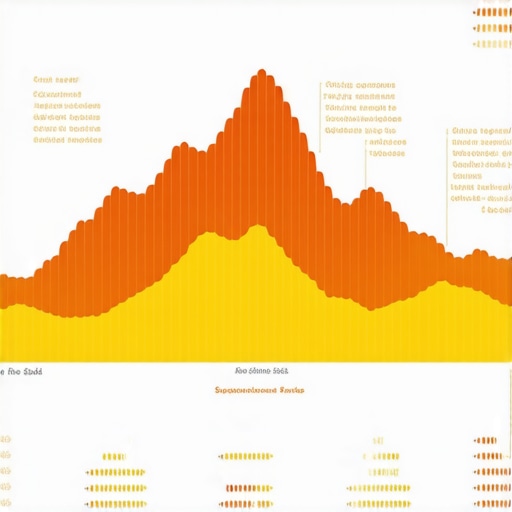
Emerging Technologies and Their Impact on Gold Liquidity and Storage Solutions
As the landscape of precious metals investment evolves, innovations in blockchain and digital ledger technology are revolutionizing how investors manage gold assets. The advent of tokenized gold allows for fractional ownership, enhanced liquidity, and seamless transferability, which significantly reduces storage and security concerns. Companies such as Paxos and Tether have pioneered platforms that offer physical gold-backed tokens, blending traditional gold investment with cutting-edge digital finance. This paradigm shift expands access to institutional-grade assets for retail investors and facilitates sophisticated portfolio diversification strategies.
How Can Advanced Analytical Tools Enhance Gold Price Forecasting in 2025?
Expert investors increasingly rely on sophisticated analytical tools, including machine learning models and big data analytics, to forecast gold price trajectories more accurately. These tools analyze a multitude of variables—macroeconomic indicators, geopolitical events, market sentiment, and supply chain disruptions—enabling proactive decision-making. For instance, neural networks trained on historical price data can identify subtle patterns and emerging trends, offering a competitive edge. Engagement with platforms such as Bloomberg Terminal or MetaTrader, integrated with real-time data feeds, empowers traders to implement dynamic hedging and entry/exit strategies with precision.
What Are the Best Practices for Incorporating ESG Factors into Gold Investment Portfolios?
Incorporating Environmental, Social, and Governance (ESG) considerations into gold investments is increasingly vital for discerning investors. Ethical sourcing and sustainable mining practices not only align portfolios with global sustainability standards but also mitigate reputational and regulatory risks. Investors should prioritize refiners and suppliers certified by organizations like the Responsible Minerals Initiative and the World Gold Council’s Responsible Gold Program. Moreover, ESG-focused ETFs and mutual funds offer diversified exposure to ethically sourced gold, providing both financial and social returns. Integrating ESG metrics into due diligence processes ensures that your gold holdings contribute positively to global sustainability efforts.
Advanced Strategies for Hedging Against Macro Risks in Gold Markets
Beyond traditional hedging techniques, investors are exploring sophisticated derivatives, such as options and structured products, to mitigate macroeconomic risks. For example, gold options can be structured to capitalize on anticipated volatility or to protect against adverse price movements during geopolitical upheavals. Additionally, cross-asset hedging—combining gold with currencies, equities, or commodities—can reduce overall portfolio volatility. Utilizing real-time risk analytics and scenario analysis frameworks helps in dynamically adjusting hedge positions, ensuring resilience against unforeseen macro shocks. For in-depth guidance, consult specialized derivatives platforms like the Chicago Mercantile Exchange or the Eurex derivatives market.
Why Is Interdisciplinary Knowledge Critical for Navigating 2025 Gold Markets?
Successfully navigating the complexities of the 2025 gold market demands an interdisciplinary approach, integrating macroeconomics, geopolitics, environmental science, and financial engineering. Understanding the interconnectedness of global supply chains, technological innovations, and political developments enables investors to anticipate market shifts more accurately. Continuous education through authoritative sources such as the International Monetary Fund, the World Gold Council, and leading think tanks provides the nuanced insights necessary for strategic positioning. Engaging with interdisciplinary research fosters a comprehensive perspective, equipping investors to capitalize on emerging opportunities while managing risks effectively.
Expert Insights & Advanced Considerations
1. Diversification with Digital Assets
Integrating digital assets such as gold-backed tokens and cryptocurrencies into traditional gold holdings can enhance liquidity and risk management, providing a modern edge to wealth preservation strategies.
2. The Role of ESG in Gold Mining
Prioritizing ethically sourced gold aligned with ESG principles not only aligns with global sustainability trends but also optimizes long-term portfolio stability and compliance with emerging regulations.
3. Macro and Geopolitical Interplay
Understanding how macroeconomic indicators and geopolitical tensions intersect allows investors to anticipate market shifts. For instance, shifts in central bank reserves in Asia can signal upcoming price movements, enabling proactive positioning.
4. Technological Innovations Impacting Liquidity
Blockchain advancements and tokenization are revolutionizing gold liquidity, facilitating fractional ownership, reducing storage concerns, and expanding access for retail investors to sophisticated assets traditionally reserved for institutional players.
5. Advanced Analytical Tools
Utilizing machine learning and big data analytics improves market forecasting accuracy, allowing investors to make informed decisions based on real-time and predictive insights, thereby maximizing returns and minimizing risks.
Curated Expert Resources
- World Gold Council: Offers comprehensive data, market analysis, and reports on global gold demand, supply, and trends essential for expert-level decision-making.
- Responsible Minerals Initiative: Provides guidelines and certifications for ethical sourcing, crucial for aligning investments with ESG standards and ensuring supply chain integrity.
- Bloomberg Terminal & MetaTrader: Advanced platforms that integrate real-time data analytics, technical analysis, and market news, empowering investors with cutting-edge tools for precise market forecasting.
- Sprott Physical Gold Trust: A key resource for understanding physical gold investment strategies and geopolitical risk assessments impacting gold demand.
- Stanford Financial Laboratory: Research hub offering insights into the relationship between digital assets and gold, enhancing understanding of hybrid hedging strategies.
Final Expert Perspective
Mastering the nuances of gold investments in 2025 requires a synthesis of traditional expertise and innovative strategies. Embracing technological advances, integrating ESG principles, and leveraging sophisticated analytical tools are critical for safeguarding and growing wealth in a complex geopolitical landscape. For dedicated investors, continual engagement with authoritative sources like the World Gold Council and cutting-edge platforms will be vital. Dive deep, stay informed, and consider consulting seasoned professionals to craft personalized, future-proof gold investment portfolios that stand the test of time. Your journey toward expert-level wealth preservation begins now—embrace these insights and resources to lead with confidence.






